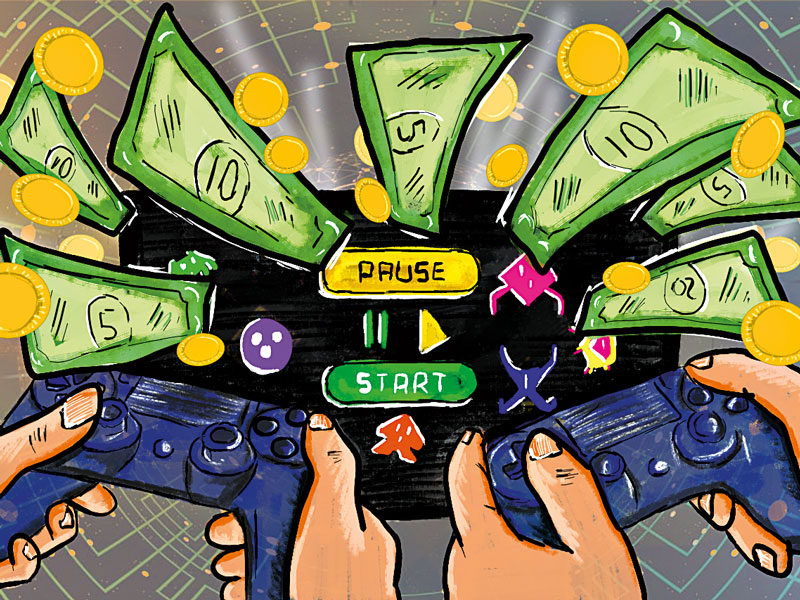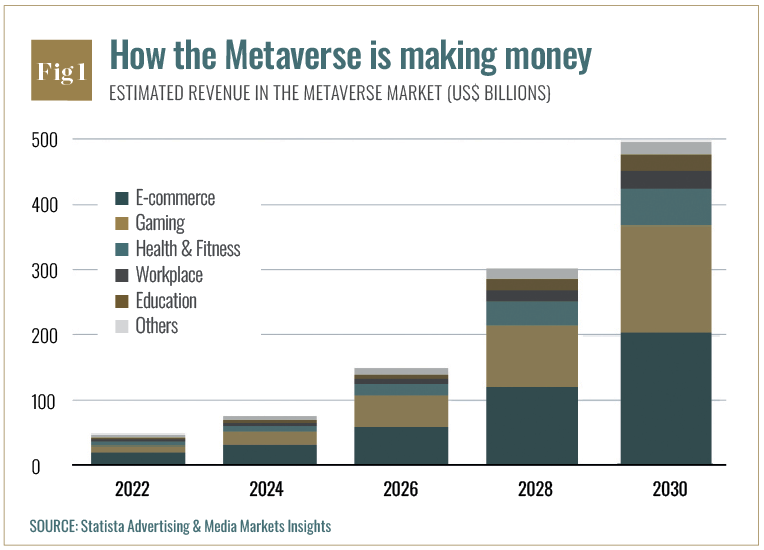
& nbsp
Author: Maryam Shahviz, line writer
Xbox and PlayStation to the rise of mobile games and electronic sports, the game has become an important part of people’s lives. The game industry, which includes the development of software, hardware, game development, electronic sports and game streaming platforms, quickly evolves like any other traditional industry in the world. Valued at around $ 300 billion, the game industry has become an industry of several billion dollars, exceeding both the music and cinematographic industry. The year 2024 was difficult for many industries, mainly for two reasons: one is global economic instability and the other is the emergence of AI. However, the game industry has proven to be resilient. It seems that the owners of game studios know how to stay in the game. According to the Deloitte report in 2024, the game industry will reach a value of $ 485 billion by 2028.
The financial strategy plays an essential role in the success and growth of the best game companies. Investors now understand that games are not only designed for entertainment, but it is a serious company that requires effective investment forecasts, well -planned commercial strategies and market adaptability. Consequently, game developers and producers around the world focus on financial strategies that increase income without disturbing the user gaming experience. These strategies modify the web of conventional financial strategies and re-develop commercial ideas on long-term investment and planning.
From entertainment to business
Today, game companies focus more on operation as a technology company rather than just concentration on entertainment. Many invest in the development of games or launch their own games. They recognize that the game industry is now based on data, engagement and diversified sources of income. Even Netflix, a well-known entertainment platform, introduced a separate section for games, while Meta, which owns Facebook, Instagram and Whatsapp, also launched different VR headset games.
Modern games earn money thanks to integrated purchases, virtual rewards and optional advertising jump
The main objective of game companies has been traditionally to produce games that will resist the time test and players will come back and again, causing a source of income over the years. Their monetization strategies are now considered to be among the most innovative in the digital world, because they continue to evolve and explore different income channels.
Consequently, a unique conventional purchase by players is now an old tale. Modern games earn money through integrated purchases, virtual rewards and an optional advertising jump. Subscription services and video advertisements have also increased income from video game producers.
Where the game meets profit
Many games today are delivered with dynamic virtual savings in the game. Unlike other companies that follow traditional financial models, game companies focus on diversified sources of income. Diversification has enabled game companies to effectively modify their risks.
The introduction of virtual assets and virtual currency is part of this financial strategy. Players use virtual currencies to buy virtual items such as tools, costumes and power-ups. This motivates players to buy and sell assets at stake to improve their gaming experience and upgrade their game profile.
In many cases, players spend real money to buy virtual assets. Although these virtual assets do not hold any real value, they can considerably improve the game experience. Some games allow players to sell their virtual assets, allowing players to make profits from their investments in play. This change has removed the difference between digital and physical savings, creating a new economic model now observed by many financial and researchers.
In addition to this, the virtual purchasing gain has become a significant part of the revenues of game companies. This is a marked change in relation to traditional financial transactions which generally require formal agreements. So players play, socialize and engage, but also use virtual currency to upgrade their gaming experience. In addition, virtual currency in games has also enabled game companies to improve their CSR strategies.
A new economy
In addition to the birth and exploration of this digital economy, a parallel economy stormed investors. NFTS and The Metaverse are the latest technological developments that stimulate the spread of virtual economies. NFTs allow players to have unique virtual assets, allowing them to develop new value channels in games. In addition, the metavese changes the game industry by implementing virtual reality (VR) and augmented reality (AR) and thus offering players a unique and therefore precious game experience. According to a statist’s report, the Métaveverse market alone is expected to reach a market volume of $ 490 billion by 2030 (See Fig 1).
There are many companies that are involved in the metavese and NFT, and these NFT -based platforms are created to attract the attention of players. Some of the eminents include: Infinity Axie, Gods Unchained, The Sandbox, Meta (Facebook), Epic Games and Decentraland. These platforms allow players to invest in virtual assets, commercial assets and characters who have value in the real economy. This creates opportunities for players and investors.
FNB climb and gamification
While the game industry is transformed into an appropriate economic force, investors and entrepreneurs react by creating financial instruments such as ETF and experience -oriented processes. However, the development of new games and related technologies requires significant investments and naturally has a degree of risk. The success of a new game depends on its reception during the launch.
Game FNBs are quite similar to the common investment funds and are distributed in a variety of different companies. Some of the famous game FNBs are Vaneck Video Gaming and Esports Etf (ESPO). With regard to financial decisions, FNBs are also easy to invest because, unlike individual actions, even an occasional investor can assess in which ETFs are better to invest.
In addition, the gamification strategy is adopted by various companies around the world. The game mechanisms are included in one form or another in almost all applications of the company. Even trading banks and applications now include game -type engagement features. The reason for the introduction of these features is that it does the whole process, which was previously considered tedious, more fun and interesting. Gamification also helps new investors understand actions and investments. Applications like Robinhood offer simple features and rewards to help users negotiate actions, which is again quite similar to the games as a reward to level.
Beyond finance, this strategy is adopted by food delivery services, online purchase applications and fitness applications. These applications offer a certain level of experience in the game. Even TEMU, whose popularity has skyrocketed, now offers integrated games to improve commitment and expenses. The purpose of this strategy is to engage their consumers to stick to their applications longer, because the longer the stay, the more likely they are.
In addition to the monetization strategies of the game industry, their social media strategy is also different from other industries. For game studios, this change has changed conventional game formats and gave birth to social game platforms. Social platforms such as Discord and Steam provided game companies a path to present their presence on social networks in a total way. He transformed the game in addition to social experience. Many online games like PUBG, Call of Duty and Dota are not only focusing on games but also on building a community of players. So, for players, the game does not become the only attraction; They also go to the platform to interact, share experiences and connect.
Now, it is a paradigm shift for game studios because it allows them not only to promote their games, but also to increase the commitment of players, which is previously unknown in the first days of the game consoles.
Today, some players do not see games like a hobby. For them, it can also be a commercial opportunity and a potential means of making a living. The developers earn money by selling their games and articles at stake, while players monetize their skills by broadcasting their video games live on platforms like Twitch and YouTube. The two platforms allow a wide range of monetization options, including subscriptions, bits, live advertising revenues and affiliate marketing. Thanks to these avenues, the game industry influences individuals to act as digital entrepreneurs. He teaches players how to invest, save, exchange and develop articles that can earn them money.
The future is playable
The game not only changes entertainment; It transforms mentalities on the economies of finance, investments and digital. The game industry has in fact helped to reshape the financial strategy by incorporating a perfect combination of commitment, innovation and user technology.
Virtual currencies and NFT in ETF, and the gamification of finance, the impact of the game industry has extended both to actors and investors. It allowed players to become digital pioneers, investors and entrepreneurs, while engaging in their favorite pastime.
Due to these developments, the financial strategies launched by the game industry are likely to become a plan for trade models for the next generation. While the game continues to influence each industry, one thing is certain. The future of business will be more interactive, engaging and focused on the game.
